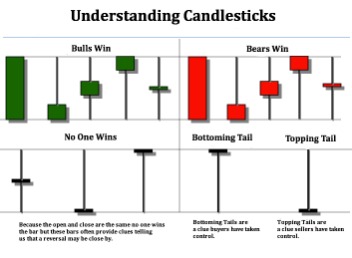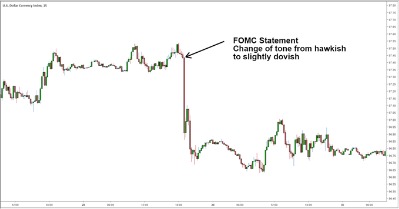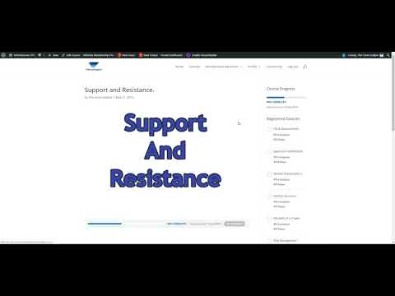
A bearish configuration that appears in both uptrends and downtrends is a descending or falling triangle. Thus, if it appears during an uptrend or a downtrend, it denotes a trend reversal, respectively. An uptrend interrupted by a head and shoulders top pattern may experience a trend reversal, resulting in a downtrend. Conversely, a downtrend that results in a head and shoulders bottom (or an inverse head and shoulders) will likely experience a trend reversal to the upside. A price pattern that denotes a temporary interruption of an existing trend is a continuation pattern.
The Graph Price Forecast: Will GRT Break Out From This Pattern? – The Coin Republic
The Graph Price Forecast: Will GRT Break Out From This Pattern?.
Posted: Wed, 06 Sep 2023 21:16:00 GMT [source]
Measure the distance from the horizontal support to the initial high and project this distance from the breakout level. Like with any strategy, you can use the descending triangle pattern to buy/sell stocks by knowing when to enter, take profits, and cut your losses. As we mentioned above, the simplest way to use this pattern is to buy the breakout of the triangle.
Day Trading Encyclopedia
This is true of any type of trading tool used in this strategy, including triangle chart patterns. It’s important to keep in mind that the market is very unpredictable and can swing in any direction even if these tools can be used to make predictions about trends. If you’re going to use triangle patterns, make sure you take positions only after you confirm a breakout in the price action of the security in question. The descending triangle is a bearish formation that usually forms during a downtrend as a continuation pattern. There are instances when descending triangles form as reversal patterns at the end of an uptrend, but they are typically continuation patterns. Regardless of where they form, descending triangles are bearish patterns that indicate distribution.
- Identifying a downward triangle formation can help traders make more informed decisions by providing signals about future price movements.
- The pattern is considered to be a bearish continuation pattern, as it typically occurs during a downtrend.
- That gives you another point to draw a horizontal line across support.
It is one of the three important triangle patterns defined by classical technical analysis. The other two being the ascending triangle and the symmetrical triangle. You can use descending triangle patterns to anticipate potential price declines. Once the pattern is confirmed by a breakout (ideally accompanied by an increase in volume), this can be a signal to consider selling or shorting the security. One of the major benefits of using AI-driven technical analysis tools like TrendSpider is the ability to backtest historical data.
Ascending Triangle Pattern
When a descending triangle pattern fails, the stock price fails to achieve the price target. When trading this chart pattern, it is important to set your stop loss inside the triangle pattern and adjust your target level based on the size of the breakdown. You can expect a target of 50% up to 100% of the distance from the entry point to the triangle resistance line. A descending triangle pattern generates an accurate bearish breakout 54% of the time.
When a descending triangle is formed during a bear market, it typically signals a continuation of the downtrend. It usually signals a continuation if it is formed in an uptrend during a bull market. Traders should watch how the stock responds when it reaches support and breaks out above or below the triangle to determine whether they should enter https://g-markets.net/ long or short positions. With features such as automated alerts, backtesting, and real-time market data, you can quickly spot and take advantage of descending triangle patterns as they emerge. The descending triangle is a bearish pattern that is characterized by a descending upper trendline and a flat lower trendline that acts as support.
This strategy anticipates a breakout from the descending triangle pattern and uses a combination of trading volumes and asserting the trend to capture short-term profits. When a stock is in a downtrend or a consolidation phase, traders watch for lower highs and lower lows being formed. A regular descending triangle pattern is commonly considered a bearish chart pattern or a continuation pattern with an established downtrend. However, a descending triangle pattern can also be bullish, with a breakout in the opposite direction, and is known as a reversal pattern.
Final Word: Descending Triangle Chart Pattern
These are indicated with a falling upper trend line and a rising lower trend line. This indicates both the sellers lowering their offers, while buyers are raising their bids. Eventually, one of the trend lines will break to trigger the next leg in the preceding trend. These triangles usually will have three contact points before they trigger the break. This means the lower, upper and lower or upper, lower and upper trend lines tag prior to the break that resumes the earlier trend.
When trading the descending triangle, traders need to identify the downtrend and this can be seen in the EUR/USD chart below. Thereafter, the descending triangle appears as the forex candlesticks start to consolidate. The measuring technique can be applied once the triangle forms, as traders anticipate the breakout. For the descending triangle,traders can measure the distance from the start of the pattern, at the highest point of the descending triangle to the flat support line.
Can a descending triangle be bullish?
And its real-time paper trading feature can help you practice with simulated trades. Short sellers love to see this pattern as it can signal a potential to profit when the price drops. To find your price target, take the thickest portion of the triangle and subtract it from the breakout point. Fortunately, regardless of the direction the formation implies, profitable trades can be produced using this charting technique. Depending on who you talk to, there are more than 35 patterns used by traders. Some traders only use a specific number of patterns, while others may use much more.

It should be noted that this pattern does not guarantee a reversal in direction. The illustration below shows the distance from A to B can be transferred lower down, from C to D, in order to project a possible take profit level. We have to take it one step forward and confirm the breakout by using the Chaikin Money Flow indicator to confirm the supply-demand imbalance. The readings that we get from the Chaikin Money Flow will tell us if the sellers have stepped in or not. This compression to the downside is what makes the pattern bullish. Jesse has worked in the finance industry for over 15 years, including a tenure as a trader and product manager responsible for a flagship suite of multi-billion-dollar funds.
Information is provided ‘as-is’ and solely for informational purposes and is not advice. WallStreetZen does not bear any responsibility for any losses or damage that may occur as a result of reliance on this data. As previously mentioned, the formation requires at least two highs and two lows. Not only that, you need to identify increasingly lower highs along with relatively consistent lows. Ultimately, experience coupled with advanced technical tools offers traders the best chance of generating successful trade outcomes. Said another way, charting pattern identification is often the result of experience – the more you trade, the better you become at identifying patterns.
What is a Descending Triangle?
The descending triangle reversal pattern occurs when a stock’s price follows a downward trend, forming a series of lower highs and a single lower low. This pattern can be used to indicate an upcoming trend reversal, but it is also important to note that it can also indicate a continuation of the existing trend. That is why it is so important for traders to understand this pattern in order to make informed trading decisions.

As you can see, the minimum measure distance is nothing but the project from the initial high. This descending triangle strategy with Heikin Ashi charts is effective to trade in the short term. The biggest risk of trading a descending triangle is that the price may not break out in the direction predicted. This could result in losses if an incorrect position is taken and insufficient stop loss orders are placed. Just count how many pips there are from the flat support line to the highest point of the triangle.
Understanding Triangle Chart Patterns
Technical analysts categorize triangles as continuation patterns of an existing trend or reversal. Despite being a continuation, traders should look for breakouts before they make a move to enter or exit a position. Since no chart pattern is perfect and analysis is often subjective, using descending triangles has limitations. A false breakdown may occur, or trend lines descending triangle stock may need to be redrawn if the price action breaks out in the opposite direction. If a breakdown doesn’t occur, the stock could rebound to re-test the upper trend line resistance before making another move lower to re-test lower trend line support levels. The more often that the price touches the support and resistance levels, the more reliable the chart pattern.